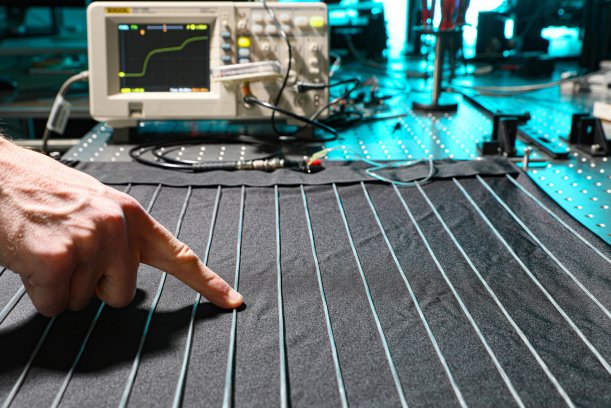
Gelvenor gives back to Dassenhoek community
Innovations are expanding the envelope of biometrics accessible through watches and skin patches.

12th October 2022
Innovation in Textiles
|
Cambridge, United Kingdom
More people than ever before are turning to wearable sensors to monitor their activity levels, according to the latest report from IDTechEx.
However, despite its origins in simple step counting, the market for wearable sensors is expanding into the more complex arena of health monitoring and innovations are expanding the envelope of biometrics accessible through watches and skin patches. They not only seek to address the growing demand for remote patient monitoring and decentralised clinical trials but also the rising expectations of the general consumer. This includes easier access to health data but extends to sensor integration into headsets and accessories for immersive experiences in the metaverse.
Not all wearable sensor technology is made equal and distinguishing between hype and reality is an increasing challenge for stakeholders. The IDTechEx report, Wearable Sensors 2023-2033, breaks down the complex landscape of sensor types, biometrics and form factors, including inertial measurement units, optical sensors and chemical sensors for vital signs, stress, sleep and even brain activity. IDTechEx highlights the key opportunities and challenges for each sensor type to achieve commercial success across the next ten years.
Motion
Motion sensing hardware is well established, with accelerometers integrated into almost every wearable. As profit margins for manufacturers therefore diminish with commoditisation, expanding the application space is crucial to maintain growth.
Emerging use cases include health insurance rewards, clinical trials and professional athlete monitoring. Key MEMs manufacturers are battling semiconductor shortages and regulatory approval to maximise entry into these sectors.
Optical
Smart-watch wearers are familiar with the red and green lights on the back of their devices, used to obtain heart-rate data or blood oxygen and further analyzed for insights into calorie burn, VO2 max and sleep quality.
Sensor developers are interested in pushing the boundaries of what can be measured non-invasively with light – whether it be through new software to analyze photoplethysmography (PPG) signals or new hardware for spectroscopy. Multiple companies are competing to lead in the commercialisation of wearable blood pressure monitoring, with others setting their sights on ambitious ‘clinic on the wrist’ devices to replace common hospital tests and even glucose monitoring.
Heart, muscle and brain
Incorporating conductive materials into wearable technology is a simple concept but has led to a vast variety of wearable sensors including wet electrodes stuck on the skin to measure the heart, dry electrodes in headphones to analyze brain signals and microneedles within skin patches to quantify muscle movements. This has created a broad application space for electrodes ranging from vital signs monitoring and sleep analysis for healthcare to emotional response and stress monitoring for marketing and productivity.
Chemical sensors are increasingly enabling diabetics to monitor their glucose levels without finger pricks but commercial devices still require a needle to be inserted below the surface of the skin. As such, the quest for less invasive wearable sensors continues. An overview of the existing market for continuous glucose marketing (CGM) is provided in the latest report, followed by an analysis of competitor technologies using microneedles and other bodily fluids. This is followed by a dedicated chapter on novel biometrics, assessing the opportunity for chemical sensor developers outside of the diabetes management space, with a focus on hydration, alcohol and lactate.
The IDTechEx report tracks the progress of over 50 wearable electronic product types.

Business intelligence for the fibre, textiles and apparel industries: technologies, innovations, markets, investments, trade policy, sourcing, strategy...
Find out more